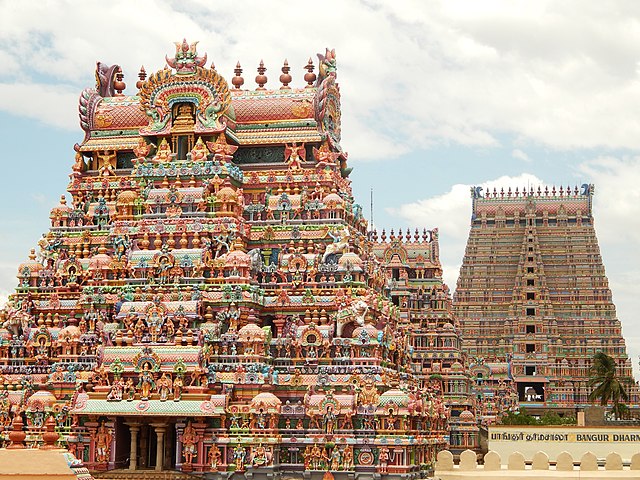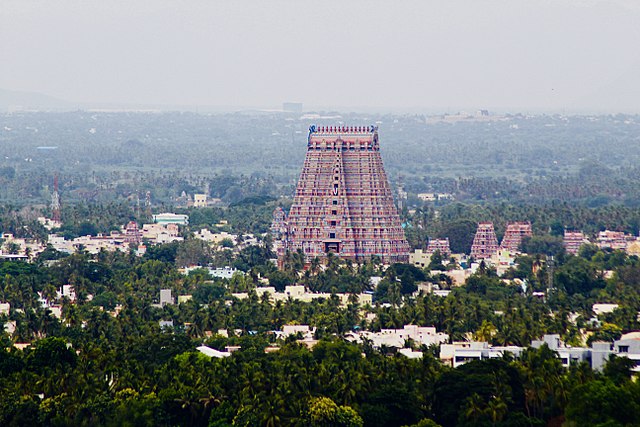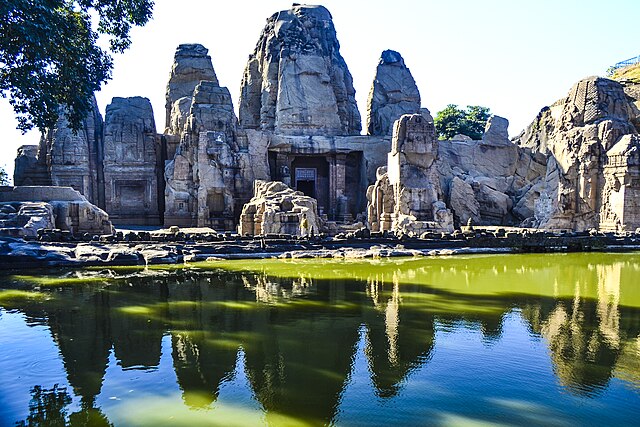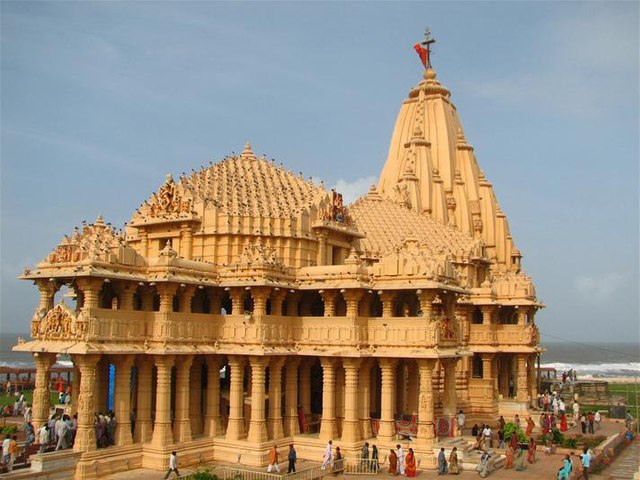Ranganathaswamy Temple, Srirangam
Ranganathaswamy Temple is a Hindu temple dedicated to Ranganatha and is located in Srirangam, Tiruchirapalli, Tamil Nadu, India. Constructed in the Dravidian architectural style, the temple is glorified by the Tamil poet-saints called the Alvars in their canon, the Naalayira Divya Prabhandam, and has the unique distinction of being the foremost among the 108 Divya Desams dedicated to the god Vishnu. The Srirangam temple is the largest temple compound in India and is one of the largest religious complexes in the world. Some of these structures have been renovated, expanded and rebuilt over the centuries as a living temple. The latest addition is the outer tower that is approximately 73 metres (240 ft) tall, it was completed in 1987. Srirangam temple is often listed as the largest functioning Hindu temple in the world, the still larger Angkor Wat being the largest existing temple. The temple is an active Hindu house of worship and follows the Tenkalai tradition of Sri Vaishnavism. The annual 21-day festival conducted during the Tamil month of Margali (December–January) attracts 1 million visitors. The temple complex has been nominated as a UNESCO World Heritage Site, and is in UNESCO's tentative list. In 2017 the temple won the UNESCO Asia Pacific Award of Merit 2017 for cultural heritage conservation, making it the first temple in Tamil Nadu to receive the award from the UNESCO.

Srirangam Temple gopurams
Srirangam temple complex across the river on left.
Plan of four inner courts of the Srirangam Temple (Burgess, 1910)
Utsava murti (Processional idol) of Sri Ranganathaswami during the Vaikuntha Ekadashi festival.
A Hindu temple, also known as Mandir, Devasthanam, Pura, or Koil, is a sacred place where Hindus worship and show their devotion to deities through worship, sacrifice, and devotion. It is considered the house of the god to whom it is dedicated. The design, structure and symbolism of Hindu temples are deeply rooted in Vedic traditions, which use circles and squares in their architecture. The temple's design also represents the concept of recursion and the equivalence of the macrocosm and the microcosm through astronomical numbers and specific alignments related to the location of the temple and the connection between the deity and the worshipper. A temple incorporates all elements of the Hindu cosmos — presenting the good, the evil and the human, as well as the elements of the Hindu sense of cyclic time and the essence of life — symbolically presenting dharma, artha, kama, moksha, and karma.
Image: Undavalli Caves
Image: Hindu temple in Ubud
Image: Masrur rockcut temple
Image: Somnath current








